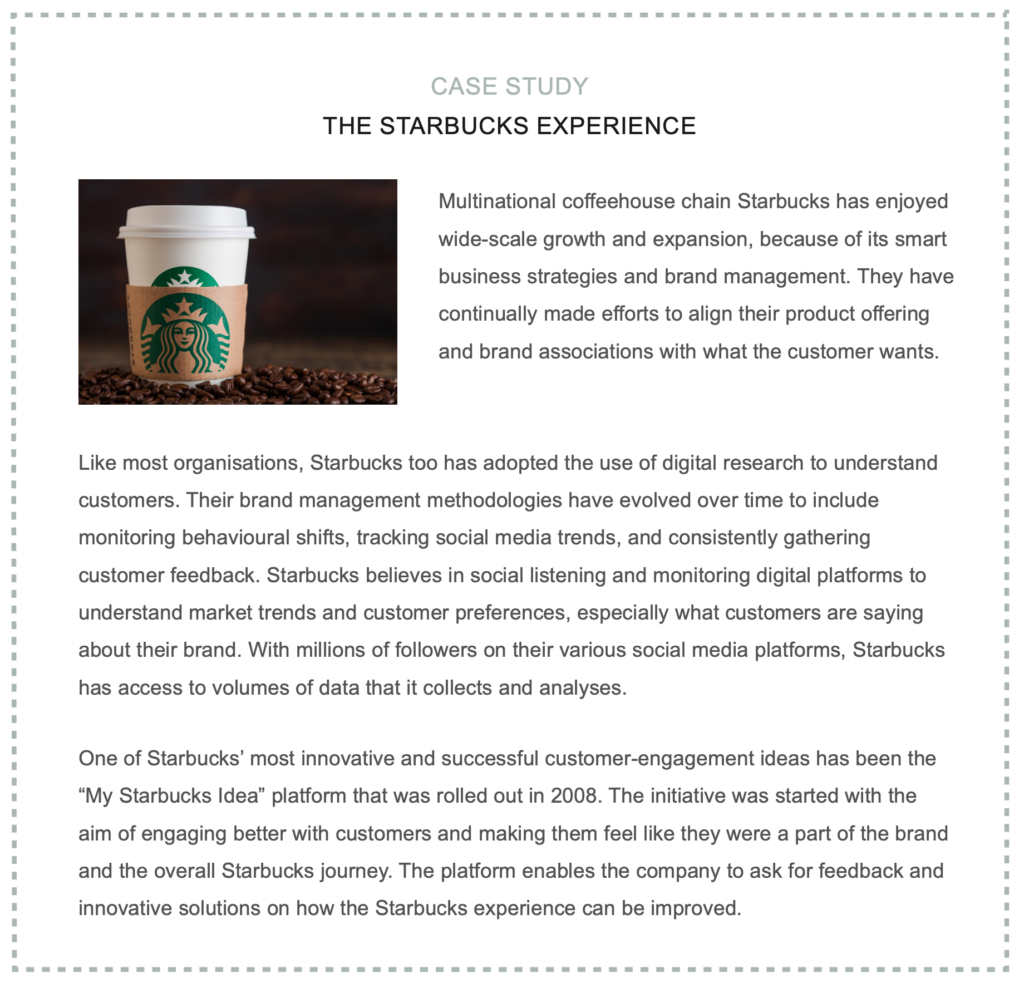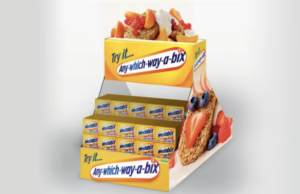A brand is one of the most important aspects of a company’s identity.
Not only does it describe the products or services the company offers, but also the way in which the company communicates its values, ethos, vision, and mission.
A brand is also a reflection of the type of customer the organisation is looking to attract, and the kind of relationship the business is attempting to build with the customer.
A well thought out brand has the ability to connect with customers at an emotional level, invoking feelings of loyalty, which can lead to a long-term affiliation.
A brand is central to a company’s reputation, and therefore must be seen as a vital asset to be nurtured and protected, over time.
Brand Distinctiveness and Differentiation
A brand is created to provide the company with a level of differentiation, so that it can stand out from the crowd, have its own voice, and be perceived as distinct. Common perception is that a brand is simply a logo that sits on a storefront, , or on top of the company’s website.
While logo design is part of the branding exercise — it’s important to have a symbol that people can associate your business with and that makes your name distinct. A brand plays three fundamental roles:
1. Brand as an identifier

2. Brand as a shorthand for quality and associations
The second is that a brand serves as a shorthand for the quality one associates with the products and services the company offers. When you walk into a store, say an Apple or a Samsung, you trust that the product you are about to purchase is a quality product.
The brand, and the association you have with it, serves as reassurance that if something were to go wrong, it would be taken care of.
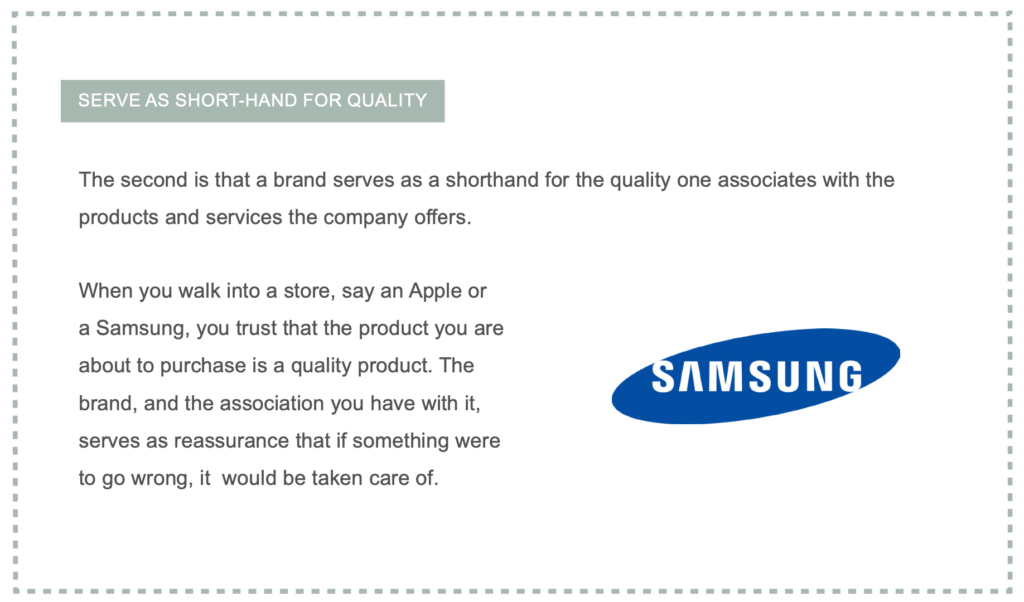
3. Brand as an offer of consistency

Sum of the three elements of a brand
The big takeaway here is that these elements don’t operate in isolation. It is the sum of these three elements that make a consumer feel a certain way about the brand.
While engaging with the brand, consumers are constantly assessing their overall experience, and whether they are developing positive or negative feelings towards the brand and/ or the product or service.
Great brands are those that can form a strong relationship with their customers by providing a positive, personalised, and value-driven experience, each time they interact with the brand.
This will result in the consumer returning, buying more, being open to the brand’s suggestions, and sharing their experiences with others.
Why are Brands important?
There are several reasons why brands are important. In the following diagram, we have broken a few of these down from the buyer’s and the seller’s perspectives.
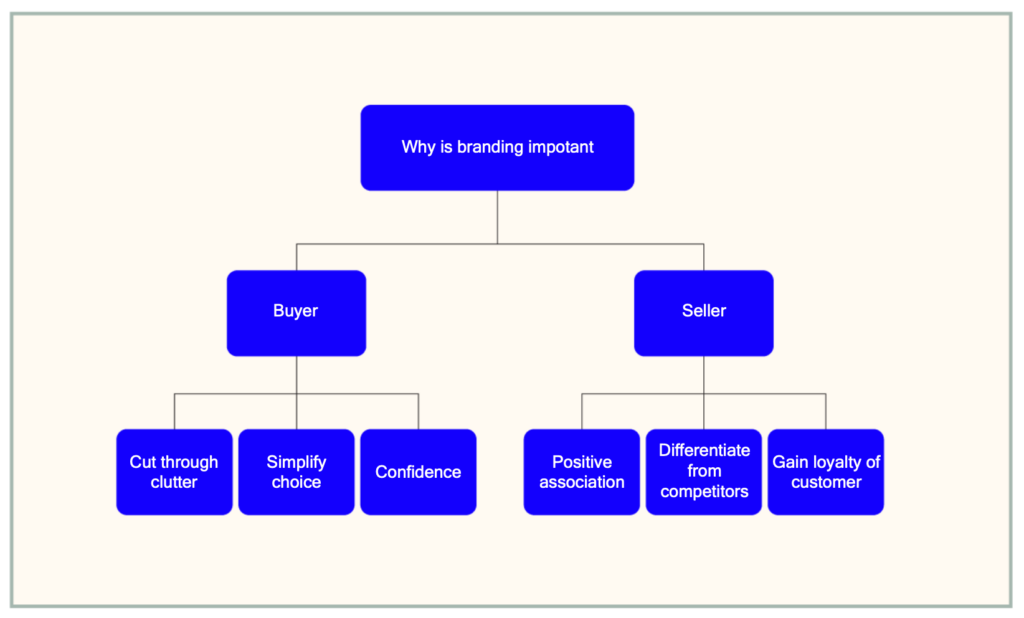
How have Brands evolved?
There are fundamental shifts that have taken place in the way brands evolve. Let’s review those shifts.
Move from consumption to participation
According to the old worldview, brands were created, be that a grocery brand, a car, or a hotel, so that people could choose one over another. In today’s world, this perception has shifted dramatically from getting the customer to buy something (from you) to getting them to be part of an experience.

For example, YouTube asks users to upload content for others to view, and Airbnb asks that users rent their homes to other users. The value added by these businesses is their ability to connect people, which is what their business model is based on.
In recent years, some of the most successful startups have been based on the platform business model, including Airbnb, Uber, YouTube, and Deliveroo.
Brands have a strong sense of purpose
Consumers today are looking at not just what brands do, but also how they do it. They want brands to not only deliver great products and services, but to also be socially responsible, and to have a greater agenda than generating profit.
A good example of how this can be implemented is Pledge 1%, co-founded by the US software company Salesforce. The organisation supports and enables corporates to integrate philanthropy into their business at an early stage by getting them to commit 1% of their product, time, and resources.
While somewhat controversial, there is strong evidence of a link between purpose and commercial return, or profit. Jim Stengel, Ex-CMO of Procter and Gamble says, “Data from a 10-year study of more than 50,000 brands showed [that] companies with a purpose at the centre of all they do, outperform the market by 400 per cent.”

A survey by brand consultancy Calling Brands carried out by consumer research system YouGov found that 65% of employees working in organisations with a strong sense of purpose went the extra mile. It was cited as the second-most important reason for individuals joining the company, with 64% saying that they would be more loyal to an organisation with a defined sense of purpose.
So, driving purpose through your business can have an impact not just on customers, but also employees.
Consumers want to feel part of the brand
Consumers, today, have many choices when it comes to brands, and therefore they want a connection, albeit an indirect one, with their brand of choice. They want to feel like they are a part of the brand and, above all, valued by the brand. Why do we say ‘indirect’?
Well, let’s observe what a brand does again. It leverages your business (or product, or service) as the only solution to your consumers’ wants and needs. And what governs what we do about our wants and needs? Motivation. Consumers and brands connect through motivation.
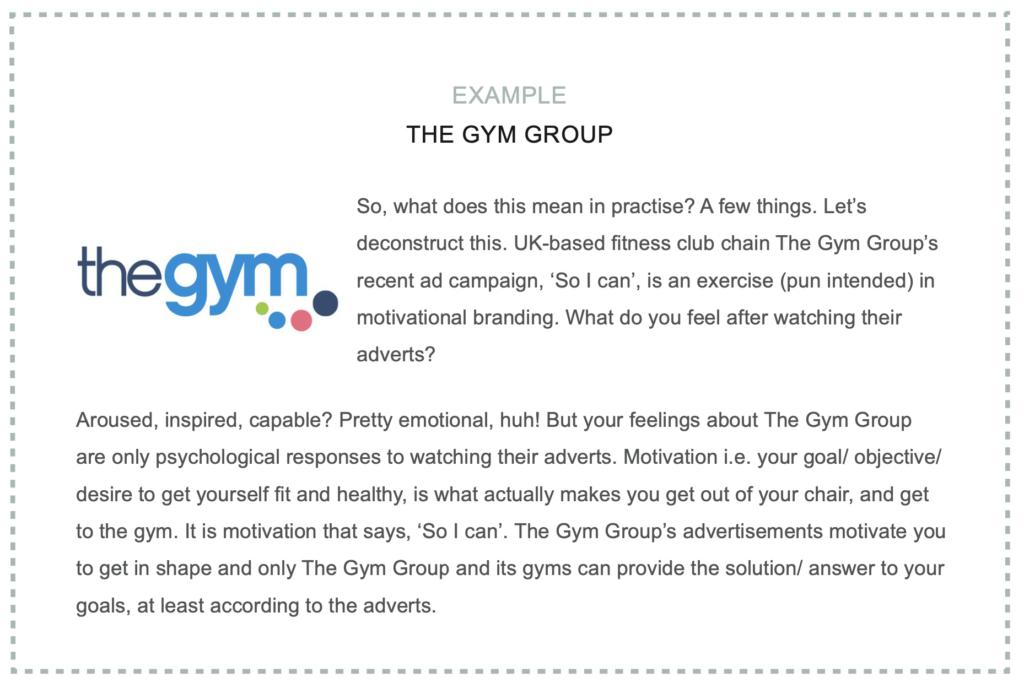
So, what are we saying here?
Let’s put it this way: emotion is how you (can) motivate people to do something. Motivation is actually what makes people do something.
So, when an executive walks in and asks you to create an ‘emotional’ advertisement, what they really mean is a ‘motivational’ advertisement. And your business, products, and services should be the only solutions for your motivated consumer.
For greater insight into the subject of motivation, read Phil Barden’s book Decoded: The Science Behind Why We Buy.
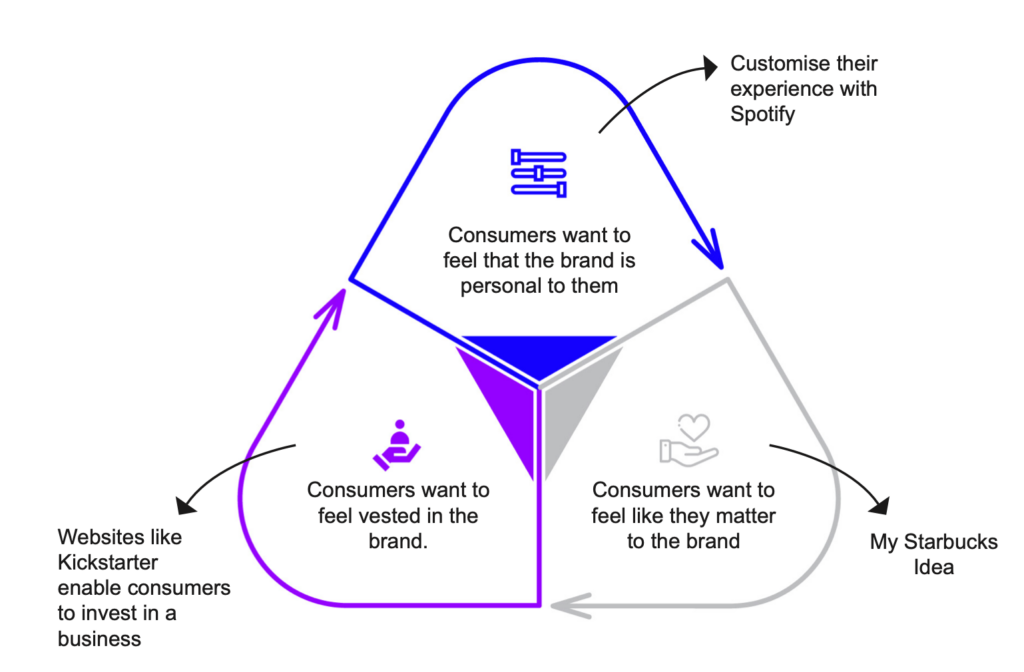
A. Consumers want to feel that the brand is personal to them, which means they want to customise their experience. This could mean anything from creating playlists on an audio and video streaming service like Spotify to tailoring the content they receive through their newspaper and magazine subscriptions.
B. They want to feel vested in the brand. Consumers often like to feel that they can be involved in the business.
This has spurred on the crowd-funding/ sourcing revolution in which the UK challenger bank Monzo has been able to generate a lot of its funding (challenger banks are small to medium retail operations that are set up with the intention of taking on large national banks).
Furthermore, crowdfunding websites like Kickstarter enable consumers to invest in a business and become ‘extra-special’ to the company.
C. Consumers want to feel like they matter to the brand and that they are taken seriously. Evidence of this can be seen when customers take to social media to be heard and influence others. In addition, they expect that their loyalty is not taken for granted. For more on this see our module on Generating Customer Loyalty.
Legacy value is less relevant
Seth Godin famously said, “at one time established in 1965 was a strength, now it’s more [of] a liability”. However, it is only a liability if your brand is stuck in 1965.
Consumers do not associate the same value and perception as they used to with brands that are long established. They are also willing to embrace new brands more readily, often because of the brand’s digital and technological strength.
Pertinent examples of this are some of the world’s most iconic brands such as Google and Amazon that are both less than 20 years old. The reason for this is because consumers are seeking value-driven brands that closely match their requirements.
Often, it’s disruptive technology companies that are achieving this, whilst more traditional companies are in danger of becoming less relevant, and even fading into insignificance.
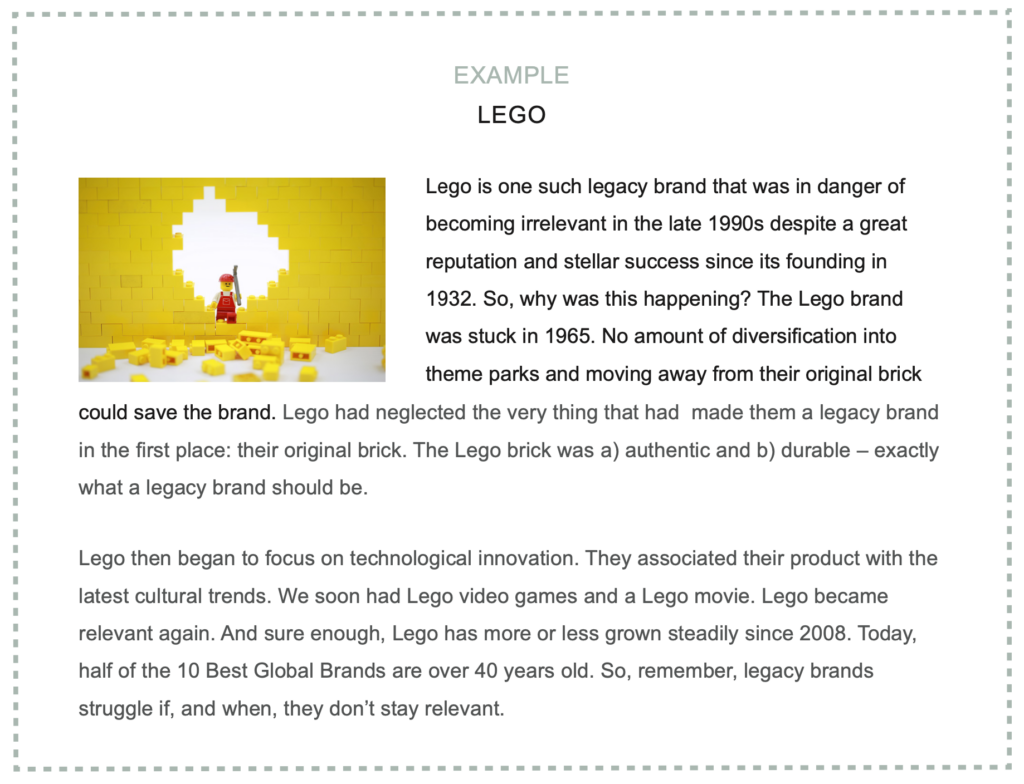
In summary, in order to create a brand that has a lasting impact and effect, we need to move away from the rather arbitrary definition of a brand being an externally-facing and externally-focussed part of our strategy. The brand needs to become a central motivational force that fuels and guides every part of the company’s operation to ensure that the company lives and breathes every aspect of the brand in everything they do.
